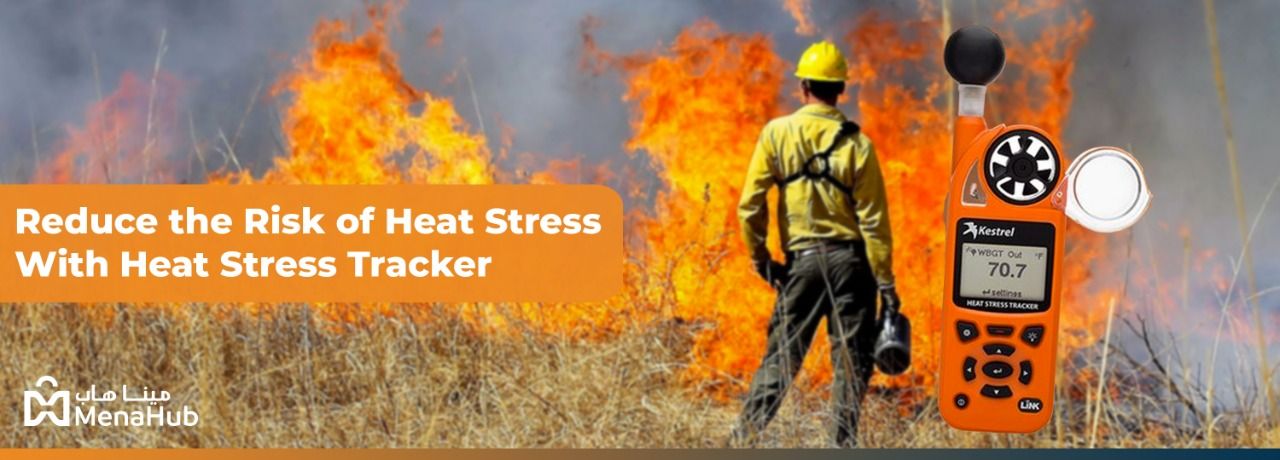
|
Heat stress is becoming increasingly common in various parts of the world. It can be classified as a huge problem that the world currently faces, and its effects are even more devastating. As the temperature has started soaring across the Gulf region, Qatar has introduced strict measures to protect workers from heat stress. Blue-collar workers, who are engaged in fields like agriculture, mining, construction, and quarrying spend most of their time outside and are particularly vulnerable to heat stress. Heat exhaustion, heatstroke, and sometimes even death are the overall health consequences caused by heat stress. What is Heat Stress?Heat stress is a condition that can be caused by prolonged exposure to intense heat. Heat stress occurs when the body cannot sustain a healthy temperature in reaction to a hot environment; the body temperature rises very quickly, and the body itself becomes unable to cool down. During these times, the body temperature can rise to 106-degree Fahrenheit or even higher, along with an increased heartbeat rate. The most common types of heat stress are heat cramps, heat rashes, and heatstroke. Possible signs and symptoms of heat stress include:- Thirst - Sweating profusely - Muscle cramps - Low Blood Pressure - Fast, weak pulse - Tiredness and weakness - Dizziness and fainting - Confusion - Irritability - Increased body Temperature - Nausea and Vomiting Factors Contributing to Heat Stress: -1. Exposure to high air temperature 2. High level of humidity 3. Direct contact with hot objects for a longer period 4. Tough physical activities Consequences of Heat StressOne may not realize it, but the consequences of heat stress are extremely harmful. When a person becomes a victim of it, they may suffer from symptoms like heavy sweating, nausea, Low blood pressure, muscle cramps, etc. A person may also lose his appetite and may become more than thirty because of the elevated temperature of his body. And, without further treatment, the next level to this sickness can be unconsciousness and, in some cases, death as well. What Has Qatar Government Done To Minimize The Effects Of Heat Stress?When many countries are concerned about the devastating consequences of heat stress, the Qatar government has done the real work. The Qatar government has introduced new legislation that provides greater protection and relief to workers from heat stress. These rules have come into force immediately - 1. The Government has banned work in outdoor workspaces from 10:00 to 15:30. This rule has increased the prohibition hours by 120 minutes. This legislation will be applied immediately and take place from 1st June to 15th September. 2. Furthermore, no outdoor work will occur if the wet-bulb globe temperature goes above 32.1 degrees Celsius in a particular workplace. This rule is independent of the time factor, which means this rule will come into place even if it's time outside of the prohibition hours. 3. Besides, the companies are responsible for the annual health check of their workers. The steps taken by the Government of Qatar are highly commendable, and it shows that they are concerned about the health of their workers. Here a question arises that what more could others do for their workers. And this brings us to the most important part of this article: The solution. A problem doesn't exist in this world without a solution. And luckily, we have the answer to the problem of heat stress. And that is Heat Stress Meters. What Is a Heat Stress Meter?A heat stress Meter is an environmental device that tracks ambient air temperature, air movement, humidity, and radiant heat. Heat stress meters are used in workplaces where the employees are exposed to extensive heat as these devices can identify potential heat stress conditions accurately and rapidly.
How are Heat Stress Meters helpful?Workers, whether working outdoors or indoors, are highly vulnerable to heat stress in high-temperature environments. Hence it becomes necessary to use a device that can monitor temperatures, calculate the risk of heatstroke conditions and alert the workers. And Heat stress meters perform the same function. They determine the outdoor and indoor conditions and inform the workers immediately, by an alarm, when things get out of hand. So, they can undertake the necessary actions and precautions. What are the different types Of Heat Stress Meters?There are two types of heat stress trackers: 1. Area Type Heat Stress Meters: These meters are mostly handheld and are most commonly used in workplaces like construction sites. However, these are suitable for workers involved in outside activities. 2. Wearable Heat Stress Meters: As their name suggests, a person can wear them. These types of meters are convenient for athletes or in the military. Besides their differences, both of them can be used outdoors and indoors (in places like steel mills and bakeries). In addition, some of the heat stress meters can be connected to the Bluetooth of Mac, iPods, and smartphones. Extreme heat conditions can cause effective rates, costly sick time, regulatory violations, and put a legal liability on you. However, suppose hot conditions are a concern at your workplace too. In that case, it is a good idea to look for effective solutions and protect your valuable employees by using Heat Stress Trackers to monitor environmental conditions. In countries like Doha, Qatar, heat conditions are quite prevalent. Therefore, environmental monitoring and recording are critical stages in guaranteeing the safety of workers, athletes, and soldiers and safeguarding your livelihoods, such as cattle, crops, and food sources. Furthermore, you may acquire real-time information to make appropriate decisions to save lives and prevent productivity loss by picking a good quality Heat stress tracker or meter that matches your demands. Final WordsHeat stress is becoming a significant concern for everyone because it endangers the life of workers who work in extreme heat conditions. It is also causing many countries to lose their important working hours, and due to it, companies are expected to face huge problems soon. The only solution to monitor environmental conditions is by using heat stress meters, which can alert the workers and employees about the possible heat stress situations, so they can act accordingly. In short, heat stress trackers can play a significant role in ensuring workers' safety and can be incredibly helpful in reducing the risk of heat stress. |



Validate your login